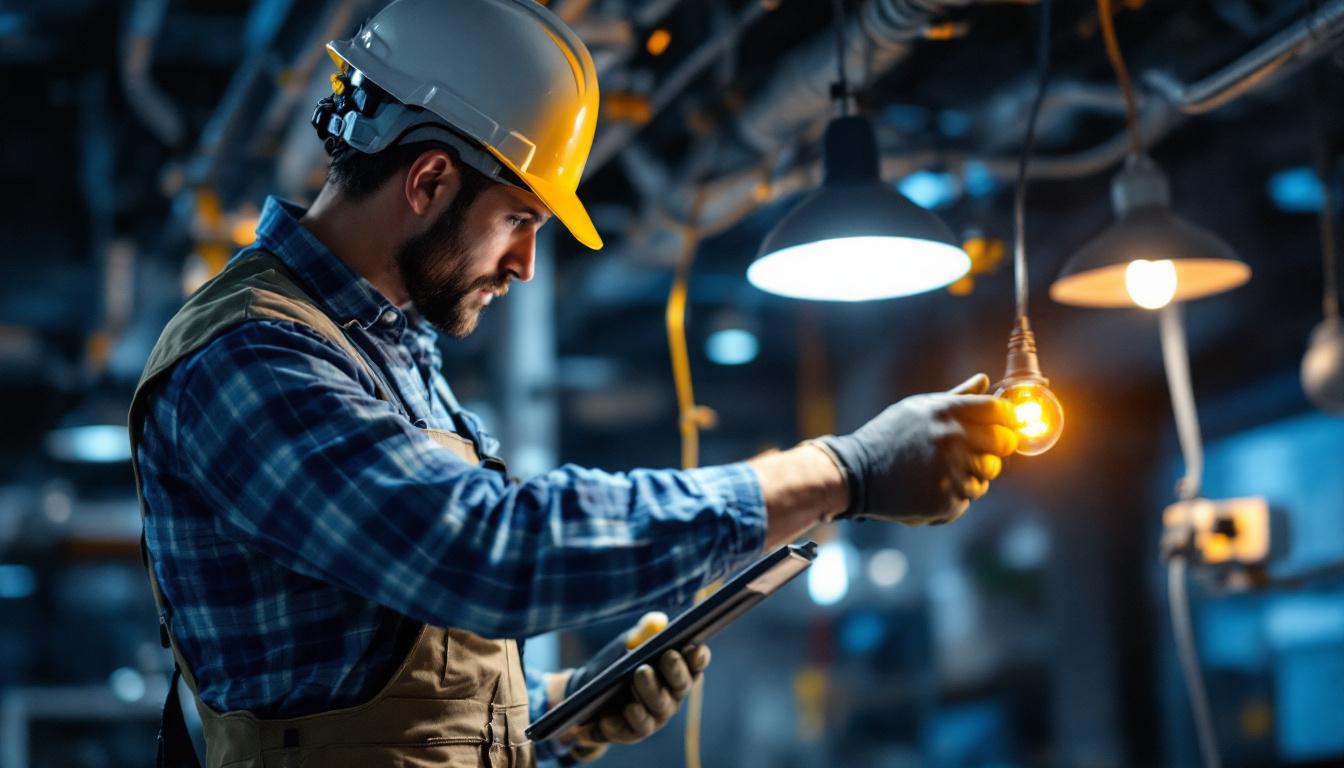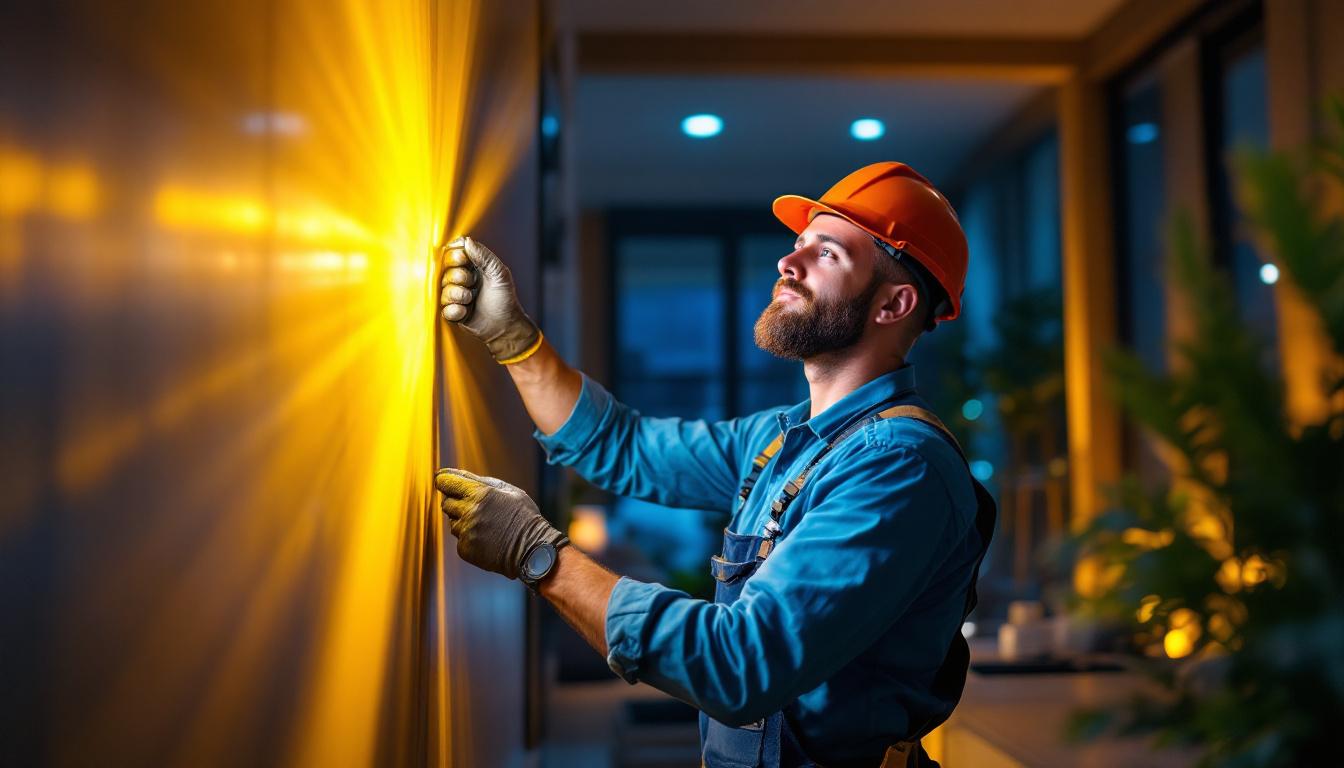
Understanding the intricacies of lighting systems is crucial for lighting contractors. One of the key components in many lighting fixtures is the ballast. This article delves into the essential facts about ballasts, their types, functions, and their importance in the lighting industry.
A ballast is an electrical device that regulates the current to a fluorescent or HID (high-intensity discharge) lamp. It provides the necessary starting voltage and limits the current during operation. Without a ballast, these lamps would not function correctly and could even be damaged.
Ballasts are essential for ensuring that lamps operate efficiently and safely. They help to maintain consistent light output and prevent flickering, which can be a nuisance in both residential and commercial settings. Understanding how ballasts work is fundamental for any lighting contractor aiming to provide quality service.
In a lighting system, the ballast serves multiple roles. Primarily, it acts as a transformer that steps up the voltage to ignite the lamp. Once the lamp is lit, the ballast then regulates the amount of current flowing through the lamp, ensuring it operates within safe limits.
Additionally, ballasts contribute to energy efficiency. By controlling the current, they help to reduce energy consumption, which can lead to lower utility bills for clients. This is particularly important in commercial applications where lighting can account for a significant portion of energy use. Moreover, energy-efficient ballasts can also qualify for various rebates and incentives, making them a financially savvy choice for businesses looking to reduce operational costs.
There are primarily two types of ballasts: magnetic and electronic. Each type has its own characteristics, advantages, and disadvantages that lighting contractors should be familiar with.
Magnetic ballasts have been around for decades and are known for their durability. They operate by using a magnetic core and coil to regulate the current. However, they tend to be bulkier and less energy-efficient compared to electronic ballasts. Despite their size, they are often favored in certain applications due to their reliability and the fact that they can withstand harsher environmental conditions, making them suitable for outdoor or industrial settings.
On the other hand, electronic ballasts are more modern and offer several benefits. They are smaller, lighter, and more energy-efficient. They also provide a more stable light output and can reduce flickering, making them a preferred choice for many applications. Additionally, electronic ballasts can often support a wider range of lamp types and wattages, providing greater flexibility for lighting designs. Their ability to dim lights and integrate with smart lighting systems further enhances their appeal in contemporary lighting solutions.
Selecting the appropriate ballast for a lighting project is crucial. The choice can affect not only the performance of the lighting system but also its energy efficiency and lifespan. Here are some factors to consider:
Every lamp has a specific wattage requirement, and it’s essential to choose a ballast that matches this requirement. Using a ballast with a wattage rating that is too low can lead to poor performance and potential damage to the lamp.
Conversely, using a ballast with a higher wattage rating than necessary may lead to wasted energy and increased costs. Therefore, understanding the wattage needs of the lamps being used is fundamental for lighting contractors.
Different types of lamps require different types of ballasts. For instance, fluorescent lamps typically require either magnetic or electronic ballasts, while HID lamps may require specific ballasts designed for their unique operating characteristics.
It’s important for contractors to be knowledgeable about the specific requirements of the lamps they are working with to ensure compatibility and optimal performance.
When selecting a ballast, environmental factors should also be taken into account. For example, in areas with extreme temperatures, certain ballasts may perform better than others. Electronic ballasts, for instance, often have a wider operating temperature range compared to magnetic ballasts.
Additionally, energy efficiency ratings can vary. Choosing ballasts that meet or exceed energy efficiency standards can not only reduce energy costs but also contribute to sustainability goals.
Proper installation of ballasts is essential for ensuring the longevity and efficiency of a lighting system. Here are some best practices that lighting contractors should follow:
Each ballast comes with specific installation instructions provided by the manufacturer. Following these guidelines is crucial for ensuring proper operation and avoiding potential issues. It’s essential to pay attention to wiring diagrams, mounting instructions, and any other specifications provided.
Failure to adhere to these guidelines can lead to malfunctioning systems, which can result in costly repairs and dissatisfied clients. Therefore, taking the time to read and understand the manufacturer’s instructions is a critical step in the installation process.
Once the ballast is installed, it’s important to test the system to ensure everything is functioning correctly. This includes checking for flickering lights, unusual noises, or any signs of malfunction. If issues arise, troubleshooting is necessary to identify the cause.
Common problems may include incorrect wiring, faulty ballasts, or incompatible lamp types. Having a systematic approach to troubleshooting can save time and ensure that issues are resolved efficiently.
Regular maintenance is key to prolonging the life of lighting systems. This includes inspecting ballasts for signs of wear or damage, cleaning fixtures, and replacing any faulty components. A proactive maintenance schedule can help prevent unexpected failures and extend the lifespan of the entire lighting system.
For contractors, educating clients about the importance of maintenance can foster stronger relationships and lead to repeat business. Providing clients with a maintenance checklist can also be a valuable resource.
Despite their importance, ballasts can encounter various issues that may affect the performance of lighting systems. Understanding these common problems can help contractors address them effectively.
One of the most common issues associated with ballasts is flickering lights. This can be caused by several factors, including a failing ballast, incompatible lamp types, or poor electrical connections. Flickering can be distracting and detrimental to the ambiance of a space, making it essential to address promptly.
To troubleshoot flickering lights, contractors should first check the ballast and ensure it is functioning correctly. If the ballast is found to be faulty, replacing it is often the best course of action. Additionally, ensuring proper connections and compatibility between the ballast and lamp can help mitigate this issue.
Another common problem is overheating, which can lead to premature failure of the ballast and lamps. Overheating can be caused by several factors, including poor ventilation, excessive wattage, or a malfunctioning ballast.
Contractors should ensure that ballasts are installed in well-ventilated areas and are not subjected to excessive heat. Regular inspections can help identify signs of overheating, such as discoloration or a burnt smell, allowing for timely intervention.
Inconsistent light output can be frustrating for end-users and may indicate a problem with the ballast. This issue can arise from a variety of factors, including aging ballasts, incorrect wattage, or compatibility issues with lamps.
To resolve this issue, contractors should assess the condition of the ballast and consider replacing it if it is old or malfunctioning. Additionally, verifying that the correct wattage and compatible lamp types are being used can help ensure consistent performance.
The lighting industry is constantly evolving, and advancements in ballast technology are no exception. Staying informed about these trends can help lighting contractors remain competitive and provide the best solutions for their clients.
One of the most exciting developments in ballast technology is the emergence of smart ballasts. These devices can communicate with lighting control systems, allowing for enhanced energy management and automation. Smart ballasts can adjust light levels based on occupancy, daylight availability, or specific user preferences.
This technology not only improves energy efficiency but also enhances the overall user experience. As more clients seek sustainable and intelligent lighting solutions, understanding smart ballast technology will be essential for lighting contractors.
As LED technology continues to gain popularity, the integration of ballasts with LED systems is becoming increasingly important. Many traditional ballasts are not compatible with LED lamps, necessitating the development of specific LED drivers that can perform similar functions.
Contractors should familiarize themselves with these new products and understand how to integrate them into existing systems. This knowledge will be invaluable as more clients transition to LED lighting solutions.
With growing concerns about energy consumption and environmental impact, energy efficiency standards for ballasts are becoming more stringent. Contractors must stay updated on these regulations to ensure compliance and provide clients with the most efficient solutions available.
By prioritizing energy-efficient products, contractors can not only meet regulatory requirements but also help clients reduce their energy costs and carbon footprint.
Understanding ballasts is essential for lighting contractors who want to provide high-quality, efficient lighting solutions. From selecting the right type of ballast to ensuring proper installation and maintenance, every aspect plays a crucial role in the performance of lighting systems.
By staying informed about the latest trends and technologies in ballast systems, contractors can enhance their expertise and offer valuable insights to clients. As the lighting industry continues to evolve, embracing these changes will ensure that contractors remain at the forefront of the field.
Ultimately, a thorough understanding of ballasts not only improves the quality of service provided but also fosters stronger relationships with clients, paving the way for future business opportunities.
Ready to elevate your lighting projects with the highest quality ballasts? Look no further than LumenWholesale, where we provide lighting contractors with spec-grade lighting products at unbeatable wholesale prices. Our selection is meticulously curated to meet the highest industry standards, ensuring you have access to reliable and high-performance lighting components for every project. Plus, with the convenience of free shipping on bulk orders, you can secure premium lighting solutions at the best value — without any hidden fees. Don’t compromise on quality or price; choose LumenWholesale for the perfect blend of affordability and excellence. Wholesale Lighting at the Best Value is just a click away.

Discover expert strategies for overcoming common challenges in landscape outdoor lighting projects.

Discover how LED lights kits are revolutionizing the lighting industry and becoming essential tools for contractors.

Discover how antique gas lanterns are revolutionizing the lighting industry for contractors.

Discover expert tips from a seasoned lighting contractor on selecting the perfect hallway wall light fixtures.